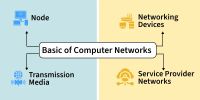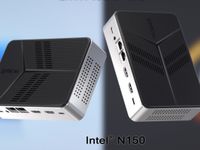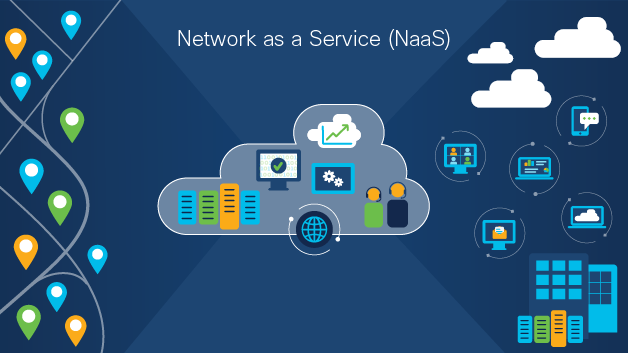Explore web search results related to this domain and discover relevant information.
Initially, public AS numbers were embraced by ISPs, but today, over 105,000 ASNs empower diverse industries, offering advantages like IP address independence and enhanced network stability. Delve into the journey of ASNs and their pivotal role in modern connectivity.
In 1989, the Border Gateway Protocol (BGP) emerged from ketchup-stained napkins, shaping the exchange of routing information among independent IP networks. Its evolution over 30 years has made BGP the heart of the Internet. Central to BGP is the concept of Autonomous Systems (AS), defined by unique numbers.Without BGP, there would be no Internet. A central concept in BGP is the notion of an Autonomous System: a group of IP networks, run by one or more network operators, with a single, clearly defined routing policy. Each AS is defined by a unique number: the Autonomous System Number (ASN).ASNs can be either public or private. Private ASNs can only be used in limited situations (e.g., in internal networks or with specific upstream ISPs) and cannot be visible in the global routing table, while public ASNs allow for global visibility of routing information.The first organizations to request public Autonomous System (AS) numbers were typically internet service providers (ISPs) and large network operators that needed to connect their networks to the global internet, such as government agencies, educational institutions, and a few private companies.

Network as a service is the transition from static, capital-intensive networking to dynamic, operationally-focused connectivity that aligns directly with business requirements.
Network as a Service (NaaS) represents a fundamental shift in how organizations design, implement, and manage network infrastructure. This consumption-based model transforms traditional networking paradigms by delivering on-demand capabilities through software-defined architectures rather than physical infrastructure investments.Network as a service companies deliver significant operational improvements through automated provisioning systems that reduce implementation timeframes from months to minutes. This acceleration transforms networking from a potential business constraint into a strategic enabler that supports digital initiatives.The transition to Network as a Service represents both a technical evolution and strategic business decision that fundamentally transforms how organizations design, operate, and leverage network infrastructure.The network as-a-service market continues to evolve in particular to address the unique needs of single and multi-cloud network environments. A new form of NaaS, known as The Alkira Platform, has emerged as the leading architecture for cloud-centric deployments.
We distribute AS Numbers according to policies developed by the RIPE community.
When exchanging exterior routing information, each AS is identified by a unique number: the Autonomous System Number (ASN). An AS is also sometimes referred to as a routing domain. Current RIPE Policy requires a network to be multi-homed, and have a unique routing policy for an ASN to be assigned.An Autonomous System (AS) is a group of IP networks run by one or more network operators with a single, clearly defined routing policy.Requests must show the routing policy of the AS.Any organisation can acquire an ASN.

An autonomous system (AS) is a collection of connected Internet Protocol (IP) routing prefixes under the control of one or more network operators on behalf of a single administrative entity or domain, that presents a common and clearly defined routing policy to the Internet.
The IANA also maintains a registry of ASNs which are reserved for private use (and should therefore not be announced to the global Internet). Originally, the definition required control by a single entity, typically an Internet service provider (ISP) or a very large organization with independent connections to multiple networks, that adhered to a single and clearly defined routing policy.ASNs 64,512 to 65,534 of the original 16-bit AS range, and 4,200,000,000 to 4,294,967,294 of the 32-bit range are reserved for Private Use. The number of unique autonomous networks in the routing system of the Internet exceeded 5,000 in 1999, 30,000 in late 2008, 35,000 in mid-2010, 42,000 in late 2012, 54,000 in mid-2016 and 60,000 in early 2018.Since not all ASes are directly connected with every other AS, a transit AS carries data traffic between one AS to another AS to which it has links. Internet Exchange Point (IX or IXP): A physical infrastructure through which ISPs or content delivery networks (CDNs) exchange Internet traffic between their networks (autonomous systems).These are often groups of local ISPs that band together to exchange data by splitting the costs of a local networking hub, avoiding the higher costs (and bandwidth charges) of a Transit AS. IXP ASNs are usually transparent.This is the latest accepted revision, reviewed on 9 September 2025. An autonomous system (AS) is a collection of connected Internet Protocol (IP) routing prefixes under the control of one or more network operators on behalf of a single administrative entity or domain, that presents a common ...
By employing a unique identification number known as the Autonomous System Number (ASN), AS enables seamless data transfer among multiple networks, ensuring reduced redundancy, and aids in maintaining an organized hierarchy in the global internet infrastructure.
As we delve deeper into the world of autonomous systems, it’s essential to understand their definition, how they work, and their real-world applications. The Internet is a network of networks, and autonomous systems are the big networks that make up the Internet.The technology term “Autonomous System” (AS) is important because it refers to a collection of IP networks and routers under the control of a single organization that presents a common routing policy to the Internet.By employing a unique identification number known as the Autonomous System Number (ASN), AS enables seamless data transfer among multiple networks, ensuring reduced redundancy, and aids in maintaining an organized hierarchy in the global internet infrastructure.Additionally, AS promotes stability in global routing, network fault isolation, and simplified administration for large networks, which ultimately contributes to better network performance and a consistent user experience.


A computer network is a collection of interconnected devices that share resources and information. These devices can include computers, servers, printers, and other hardware. Networks allow for the efficient exchange of data, enabling various applications such as email, file sharing, and internet ...
A computer network is a collection of interconnected devices that share resources and information. These devices can include computers, servers, printers, and other hardware. Networks allow for the efficient exchange of data, enabling various applications such as email, file sharing, and internet browsing.Client-Server Architecture:Client-Server Architecture is a type of Computer Network Architecture in which Nodes can be Servers or Clients. Here, the server node can manage the Client Node Behaviour. Peer-to-Peer Architecture: In P2P (Peer-to-Peer) Architecture, there is not any concept of a Central Server. Each device is free for working as either client or server.An interconnection of multiple devices, also known as hosts, that are connected using multiple paths for the purpose of sending/receiving data or media. Computer networks can also include multiple devices/mediums which help in the communication between two different devices; these are known as Network devices and include things such as routers, switches, hubs, and bridges.Each layer of OSI has different functions and each layer has to follow different protocols. The 7 layers are as follows: ... A protocol is a set of rules or algorithms which define the way how two entities can communicate across the network and there exists a different protocol defined at each layer of the OSI model.
Each AS is assigned a unique ASN, which is a number that identifies the AS. ... Subscribe to theNET, Cloudflare's monthly recap of the Internet's most popular insights! ... The Internet is a network of networks*, and autonomous systems are the big networks that make up the Internet.
Typically, each AS is operated by a single large organization, such as an Internet service provider (ISP), a large enterprise technology company, a university, or a government agency. *A network is a group of two or more connected computers.If that first computer is also sending packets to 198.51.100.255, the packets go to a different AS (although they may pass through Acme Co.'s AS on the way). ... When networking engineers communicate which IP addresses are controlled by which ASes, they do so by talking about the IP address "prefixes" owned by each AS.With so many ASes in the world, BGP routers are constantly updating their routing tables. As networks go offline, new networks come online, and ASes expand or contract their IP address space, all of this information has to be announced via BGP so that BGP routers can adjust their routing tables.ASes connect with each other and exchange network traffic (data packets) through a process called peering. One way ASes peer with each other is by connecting at physical locations called Internet Exchange Points (IXPs).

Networking is the art of connecting devices, systems, and people. This digital world that we use every day relies on networking infrastructure.

Discover how Network-as-a-Service (NaaS) simplifies enterprise LANs with cloud-managed services, flexible pricing, and built-in optimization. Learn more.
It is typically highly flexible and scalable, allowing organizations to easily modify their network capabilities based on demand or business requirements. So why is there so much confusion surrounding NaaS? As you dig into the specifics, there are both small and large differences in what a Network as a Service solution includes and how it works depending on the use case in question.Network as a Service for the Enterprise LAN includes all the networking hardware and software, with the software delivered as a cloud-based platform, plus security and ongoing operations for the network itself. For some solutions, “ongoing operations” includes things like troubleshooting, break/fix services, and software upgrades/maintenance.In many cases, the service also includes the upfront design, optimization and deployment of the network. Like any pay-as-you-go SaaS platform, customers gain access to state-of-the-art network technology and services without the upfront—often significant—capital expenditures for equipment, or the need to purchase software licenses and maintenance contracts on an on-going basis, or face other upkeep costs.This virtualized construct allows for the daily operation and management of the network via a cloud platform without the requirement for physical proximity. Typically a NaaS offering is designed as a fully integrated tech stack, where all the various hardware components and the software platform are designed to work together seamlessly.
Network operators need Autonomous System Numbers (ASNs) to control routing within their networks and to exchange routing information with other Internet Service Providers (ISPs).
An Autonomous System (AS) is a group of one or more IP prefixes (lists of IP addresses accessible on a network) run by one or more network operators that maintain a single, clearly-defined routing policy.Network operators need Autonomous System Numbers (ASNs) to control routing within their networks and to exchange routing information with other Internet Service Providers (ISPs).A transit AS acts as a link between two or more other ASes, allowing for data to pass through it, even data from unassociated networks.ISPs, for example, offer their customers and their customers’ networks access to other networks and the Internet via transit AS.


You might be wondering 'What is a network?' if you are interested in learning more about computer communications. A network, also known as a computer network, is a system of interconnected computer systems. At the most basic level, a network consists of two computer systems, with the simplest ...
You might be wondering 'What is a network?' if you are interested in learning more about computer communications. A network, also known as a computer network, is a system of interconnected computer systems. At the most basic level, a network consists of two computer systems, with the simplest connective medium between them being a physical cable.Nodes: A node is a point of connection that can send, receive, generate and store data. The server is the central node, and every individual computer in the network is also a node, as are all of the peripherals and switches.A local area network, or LAN, is a network that spans a limited geographical area. LANs can be as small as a single home with a single user or as large as an enterprise with several thousand clients. A business' private network is an example of a LAN.A wireless local area network, or WLAN, is a variation of a LAN. As the name suggests, the connection between nodes in a WLAN is wireless. As there is no connection physically to a cable, this type of network allows for freedom of movement.
Non-members can use the form above to enter up to 25 IP addresses or AS numbers to query. Results can be exported to XLSX for inclusion in your security reports or other tools. With a membership query up to 20000 IP addresses at once. A gold mine of data for security analysts, network defenders ...
Non-members can use the form above to enter up to 25 IP addresses or AS numbers to query. Results can be exported to XLSX for inclusion in your security reports or other tools. With a membership query up to 20000 IP addresses at once. A gold mine of data for security analysts, network defenders and other cyber security professionals.Enumerate and Discover. Know the Network IP & DNS Recon Tools ... We use cookies to ensure that we give you the best experience on our site. If you continue to use this site we assume that you accept this.OkAn ASN can be made up of IPv4 and IPv6 prefixes. Our tool will show all prefixes within the ASN including IPv6 network ranges.Lookup IPv4 / IPv6 address to AS or ASN to IP ranges. Quickly find the Autonomous System owner using the online tool and the Free API.
Interested in the Autonomous System Number? An ASN is a set of IPs belonging to a network managed by a single organization. ✓ Learn more today!
The McLaren Formula 1 Team keeps their network race-ready with ThousandEyes. ... Cisco U. Courses ... An Autonomous System (AS) is a set of Internet routable IP prefixes belonging to a network or a collection of networks that are all managed, controlled and supervised by a single entity or organization.The AS is assigned a globally unique 16 digit identification number一known as the autonomous system number or ASN一by the Internet Assigned Numbers Authority (IANA). Autonomous systems numbered one to 64511 are available by IANA for global use. The 64512 to 65535 series is reserved for private and reserved purposes. Autonomous Systems were introduced to regulate networking organizations such as Internet Service Providers (ISP), educational institutions and government agencies.Interested in the Autonomous System Number? An ASN is a set of IPs belonging to a network managed by a single organization. ✓ Learn more today!Border Gateway Protocol (BGP) is the protocol that manages the routed peerings, prefix advertisement and routing of packets between different autonomous systems across the Internet. BGP uses the ASN to uniquely identify each system.


GMKtec has announced a new mini PC that not only serves as a classic desktop system, but can also be used as network storage. Four storage bays together with two 2.5G Ethernet ports make for both ample storage space and fast network connectivity.
Four storage bays together with two 2.5G Ethernet ports make for both ample storage space and fast network connectivity. Silvio Werner (translated by Jacob Fisher), Published 01/16/2025 🇩🇪 🇫🇷 ... 🇪🇸 🇵🇹 🇮🇹 🇳🇱 🇵🇱 🇷🇺 🇨🇳 ... GMKtec is well established in the mini PC niche; we have reviewed several of its products here at Notebookcheck. The company recently announced a new mini PC, namely the G9, a dual system that serves both as a classic PC and as a NAS device.> Expert Reviews and News on Laptops, Smartphones and Tech Innovations > News > News Archive > Newsarchive 2025 01 > GMKtec G9: Ultra mini PC that doubles as network storageI have been active as a journalist for over 10 years, most of it in the field of technology. I worked for Tom’s Hardware and ComputerBase, among others, and have been working for Notebookcheck since 2017. My current focus is particularly on mini PCs and single-board computers such as the Raspberry Pi – so in other words, compact systems with a lot of potential.In addition, I have a soft spot for all kinds of wearables, especially smartwatches. My main profession is as a laboratory engineer, which is why neither scientific contexts nor the interpretation of complex measurements are foreign to me.
Network as a service (NaaS) customers can purchase network, compute, and other services to operate their networks, in place of traditional networking infrastructure.
NaaS is a cloud model that enables users to easily operate the network and achieve the outcomes they expect from it without owning, building, or maintaining their own infrastructure. NaaS can replace hardware-centric VPNs, load balancers, firewall appliances, and Multiprotocol Label Switching (MPLS) connections. Users can scale up and down as demand changes, rapidly deploy services, and eliminate hardware costs.The traditional network model requires capital expenses (CapEx) for physical networks with switches, routers, and licensing. The do-it-yourself IT model requires time for planning and deployment as well as expertise to install and configure infrastructure and to ensure security access policies are in place.With the pace of innovation, most enterprises are finding they can no longer afford the time it takes to build and maintain their own network infrastructure. NaaS simplifies how hardware and software technologies are managed and consumed. It enables greater speed, agility, and scale. SD-WAN can be deployed as a value-added service with NaaS to enhance performance, security, redundancy, and application experience.It automates multiple processes such as onboarding new users and provides orchestration and optimization for maximum performance. This can help to eliminate the time and money spent on these processes. Enterprises rely on vendors to provide full-lifecycle management. Today's workers may require access to the network from anywhere—home or office—on any devices and without relying on VPNs.

Network as a service is the transition from static, capital-intensive networking to dynamic, operationally-focused connectivity that aligns directly with business requirements.
Network as a Service (NaaS) represents a fundamental shift in how organizations design, implement, and manage network infrastructure. This consumption-based model transforms traditional networking paradigms by delivering on-demand capabilities through software-defined architectures rather than physical infrastructure investments.Network as a service companies deliver significant operational improvements through automated provisioning systems that reduce implementation timeframes from months to minutes. This acceleration transforms networking from a potential business constraint into a strategic enabler that supports digital initiatives.The transition to Network as a Service represents both a technical evolution and strategic business decision that fundamentally transforms how organizations design, operate, and leverage network infrastructure.The network as-a-service market continues to evolve in particular to address the unique needs of single and multi-cloud network environments. A new form of NaaS, known as The Alkira Platform, has emerged as the leading architecture for cloud-centric deployments.


Rashida Jones is stepping down as president of MSNBC and one of her top lieutenants, Rebecca Kutler, is taking over as interim network president.
Mark Lazarus, the future CEO of the spin-off, said in a Tuesday morning memo that Jones had “expertly navigated MSNBC through a years-long, unrelenting and unprecedented news cycle, all while driving the network to record viewership and making investments in nonlinear businesses.” · Now, Lazarus said, he will collaborate with Kutler “as we shape our collective future together.”Jones was a historic pick – the first Black person to run a major television news network. She recruited new hosts like Jen Psaki and prioritized digital expansions of the MSNBC brand. In 2022, she hired Kutler from CNN. TODAY -- Pictured: Rachel Maddow on Monday, October 16, 2023 ... Kutler spent 20 years at CNN, first as an intern for one of anchor Wolf Blitzer’s programs in the Washington, DC, bureau.During a Tuesday morning conference call with staffers, Lazarus said Kutler will be hiring a head of newsgathering and a head of talent as she builds out a leadership team. Lazarus also put an end to speculation that MSNBC might have to rebrand itself once it is spun off from NBC. The cable network will keep its name, he said.The change atop the progressive news network comes as its corporate parent, Comcast, prepares to spin off MSNBC and other cable channels into a separate publicly traded company.

Businesses today demand flexibility, responsiveness, and resilience to remain competitive – and networks are evolving and adapting accordingly. Enter Network-as-a-Service (NaaS) – a game-changing model that simplifies how businesses access and scale their network resources.
Enter Network-as-a-Service (NaaS) – a game-changing model that simplifies how businesses access and scale their network resources. NaaS eliminates the headaches of traditional bandwidth purchasing experiences or dealing with complex configurations, placing agility and resource control directly at your fingertips.Network-as-a-Service is a self-serve, dynamically scaling, provider-owned and -operated bandwidth delivery platform transforming how businesses connect and grow. Imagine having all the networking power you need, delivered on-demand and adjustable in real-time, enabling you to optimize your network configuration and IT resources.NaaS solution providers often present varied and conflicting ideas of what a true Network-as-a-Service offering should be. However, the solutions themselves frequently overpromise and under-deliver, falling short of NaaS’s full potential.Visual network functions (for monitoring/management) Adjacent communications and enhanced security services · Stay Always On: A strong NaaS solution will enable peak performance with features such as intelligent routing, automated failover, and rapid resource adjustments.
Learn what Network as a Service (NaaS) is, why it is a priority for businesses, and its advantages. Discover NaaS use cases to see how NaaS can work for you.
What is NaaS? NaaS can replace other networking systems that often require more work and provide less agility, such as virtual private networks (VPNs) and multiprotocol label switching (MPLS). In addition, by using NaaS, you can shift your networking system to your provider, who can also give you security services to keep your network environment safe.These networks consisted of a series of physical devices, including switches, routers, firewalls, and more. And software was used to control how these components interact with each other. As time passed, however, software-defined networking (SDN) began to grow in popularity, and this became the predecessor for NaaS.You can also use a NaaS provider to source physical networking devices, but instead of buying them, you rent them, whether they’re in your physical location or data center. 2025 Gartner® Magic Quadrant™ for SASE Platforms · Fortinet has been recognized as a Leader in the 2025 Gartner® Magic Quadrant™ for SASE Platforms.NaaS works by offering organizations networking services so they do not have to invest in purchasing, installing, and maintaining networking hardware. The customer then pays a subscription monthly to access the provider’s network resources. The provider may offer customers a range of different options, such as:


In information technology, a network is defined as the connection of at least two computer systems, either by a cable or a wireless connection. The simplest network is a combination of two computers connected by a cable. This type of network is called a peer-to-peer network.
There is no hierarchy in this network; both participants have equal privileges. Each computer has access to the data of the other device and can share resources such as disk space, applications or peripheral devices (printers, etc.).The Wireless LAN (Wireless Local Area Network, i.e. the Wi-Fi network) in your home is a good example of a small client-server network. The various devices in your home are wirelessly connected to the router, which acts as a central node (server) for the household.The router itself is connected to a much larger network: the Internet. Since the devices are connected to the router as clients, they are part of the network and can use the same resource as the server, namely the Internet. The devices can also communicate with each other without having to establish a direct connection to each device.The main task of a network is to provide participants with a single platform for exchanging data and sharing resources. This task is so important that many aspects of everyday life and the modern world would be unimaginable without networks.






